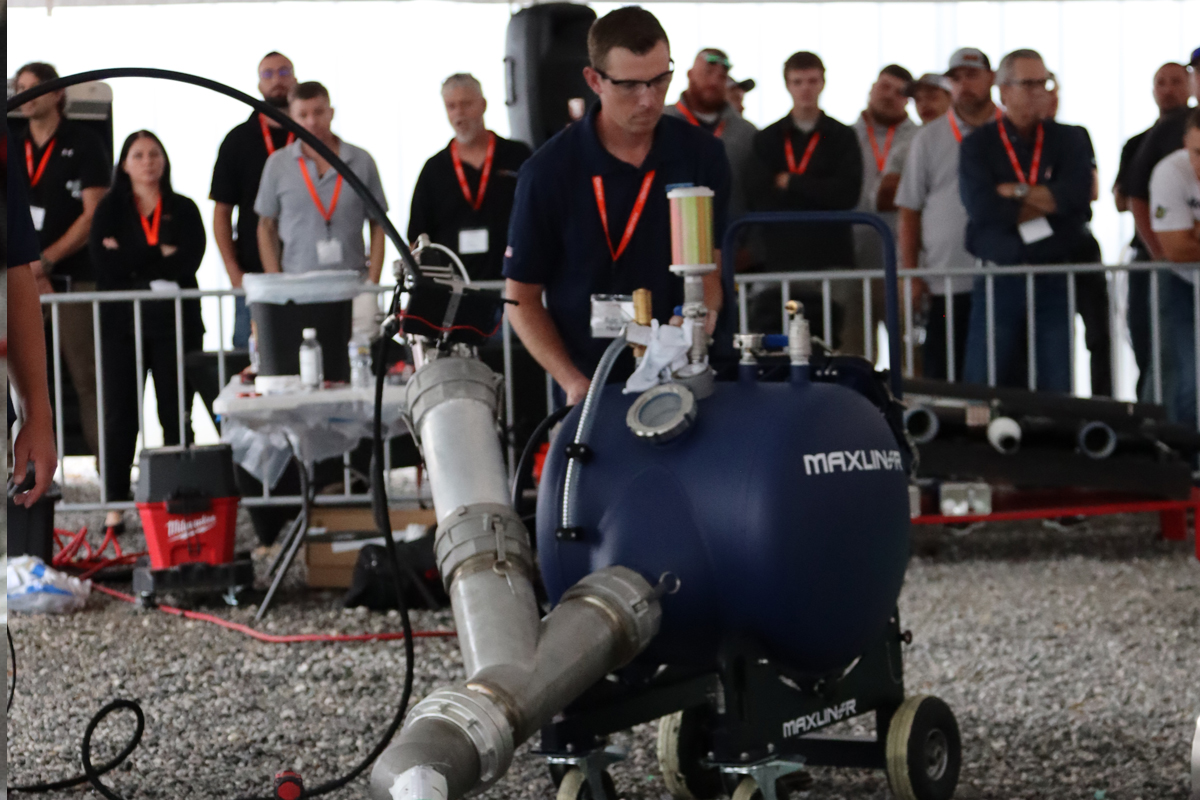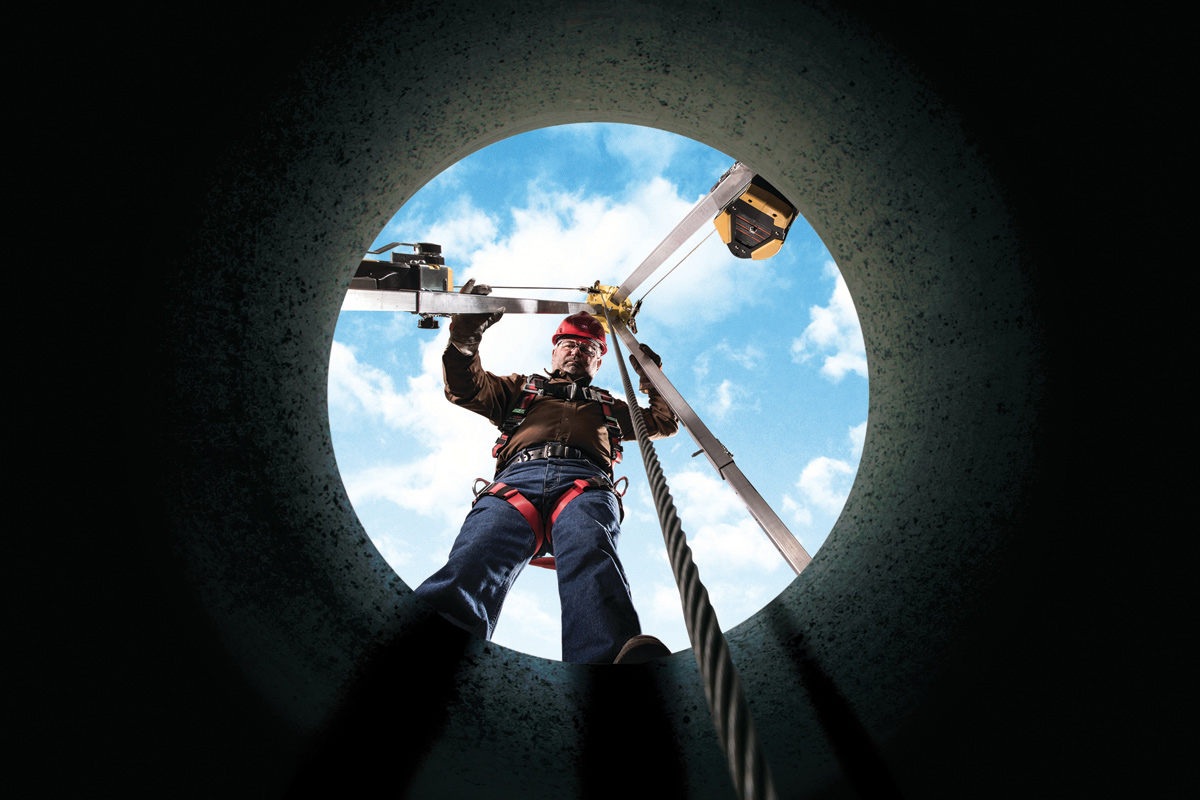
Invisible Waterproofing Membrane Performs Heroically on Cincinnati’s Historic Union Terminal Fountain
When Cincinnati’s historic Art Deco Union Terminal water fountain required a critical waterproofing solution for long-term preservation, a new polyurea coating from OBIC Products was chosen to ensure an intact, beautifully performing structure for generations to come.
Opening in 1933, the National Historic Landmark is considered an architectural treasure. Union Terminal includes a 5,000-sq ft “magical whispering fountain” that sits across from the building’s southern face. So, when the Cincinnati Museum Center embarked on a two-year restoration of the complex, the badly deteriorated fountain was included.
Bringing in the big guns
John G. Waites Architects (New York City), one of America’s premier architectural preservation firms, was tapped to handle the restoration of significant interior spaces and the exterior of the Union Terminal building and fountain. Clay Palazzo, historic preservation architect in charge of JGWA’s involvement, dealt with significant fountain restoration challenges. Primary was the fountain’s location atop a structural slab over the Children’s Museum.
“For years, they’d had water infiltration (into the museum below),” he says. “The original fountain was concrete with a rustic terrazzo finish,” which is unsealed and therefore water permeable. The concrete for the cascading fountain had been laid on top of a lead pan, which sat atop coal tar waterproofing, on the structural slab.
Untenable design flaws
“The design allowed water to percolate through the terrazzo and the concrete,” Palazzo explains. “There was no water escape route, no lead liner drain.” Water perked through, froze in winter and expanded, cracking the concrete. Eventually, pool paint coated the fountain’s well, but “that never got the water out of the concrete,” says Palazzo. “Freeze/thaw cycle movement and concrete deterioration telegraphed up through the pool paint.” Lacking any other solution—aside from ripping the whole structure apart and rebuilding it — pool paint became an annual spring application.

Historical accuracy required
“That was not a satisfactory way forward,” admits Palazzo. “So (in) the restoration, everything on that structural deck—not just the fountain, but the circular entry drive and surrounding planting beds—was scraped down to the concrete deck. A new waterproofing system would be laid on the deck, then we would build from there.”
Government tax credit funding required absolute historical faithfulness, to the extent possible using modern materials. The entire process had to be reviewed by the historic preservation office and the National Park Service.
Construction subcontractor, Cincinnati’s Prus Construction, brought in portable laser measuring devices. Extreme pains were taken to get accurate measurements of the existing fountain, with its signature scallop design, before demolition.
Materials/maintenance compromise
With the unsealed rustic terrazzo, maintenance crews must still annually empty the pools before freeze-up, to prevent major cracking. They may also need to do occasional patching, a cost of maintaining historical accuracy.
Workable as this compromise was, it made the waterproofing membrane between terrazzo and concrete base of critical importance. If planners couldn’t find a waterproofing solution that could do the long-term job, they’d just be applying a band-aid over what would again become a bleeding wound…a major redesign and specification challenge.
Research and resolve
Palazzo and colleagues thoroughly researched available water barriers, deciding on a polyurea membrane. “We’re always looking for a way to have new technology coincide with historic finishes and construction, so this seemed ideal.”
Three polyurea products were considered, but when the terrazzo companies realized the fountain included 3,000 ft of vertical surfaces, they were uncomfortable. Lacking experience with the performance of polyurea products in vertical applications, they feared sag, or the terrazzo mortar bed’s inability to permanently adhere to the waterproofing membrane.
Experience breeds confidence
Palazzo was undeterred, believing polyurea was the right solution. In November, 2016, he was introduced to Gary Mock, vice president of Advanced Rehabilitation Technology (ART). Mock agreed that polyurea was the way to go. Mock and the crews at ART were well versed and experienced in the application of polyureas for waterproofing applications in various municipal and utility infrastructure projects. “Polyurea waterproofing membrane is used on many bridge decks. Asphalt is laid over it without issue, similar to what would be required for the fountain,” Mock relates.
He knew the specific polyurea product to recommend, having previously installed OBIC Products’ Armor 1000 system with great success. Armor 1000 is a spray-applied coating that forms a durable, seamless, monolithic waterproof membrane.
OBIC Armor 1000 is typically specified and used in sanitary wastewater and stormwater collection systems for the restoration, protection and rehabilitation of vertical structures such as manholes, wet wells, storm drains and other man-entry containers or conduits for water flow. The requirements for a product to perform in these often caustic, harsh environments is demanding and in the case of buried infrastructure assets, must not be affected by freeze/thaw cycles, hydrostatic loads or ground movement — scenarios not unlike the fountain.
It was these unique performance characteristics for application in underground wet utility structures that made it a natural fit to be considered for use in an architectural application as the purposes of applying the product are identical: restore structure integrity, eliminate water ingress, protect the substrate and extend asset life.
Pre-installation testing
Still, the risk—and the project price tag—were significant. Palazzo wanted to be as sure as possible that Armor 1000 was the way to go, and others wanted to test it against pool paint. At the request of Palazzo and Richard Prekaiski—prime contractor Turner Construction’s senior project manager—a test bed was set up.
Two, 4-ft-square precast concrete cubes were created. These were open, so installers and applicators had to deal with inside and outside corners, and top edge coping, one cube for each material. It was an inexpensive way to simulate the different circumstances they’d have for each application.
Experimental finishing
Mock searched for something to roughen the polyurea surface to give the mortar something to key into. Lathing was not ideal, so he came up with the idea of broadcasting aluminum oxide granules (black sand) across the wet polyurea before it cured. However, the architect feared the aluminum may have a reaction to the fountain water’s chlorine. He knew some would leach down through the unsealed terrazzo to the waterproof membrane, so finally settled on changing the granules to silica sand—a common, non-reactive component of Portland cement.
Bonus performance
The test outcome was conclusive. The two mockups had sat outside, November through January; freezing, thawing, holding rain and snow. Several cracks appeared in the pool material, while the terrazzo-over-polyurea held firmly. “I took a hammer in front of our group to test adhesion,” remembers Mock. “It took several heavy blows, and then the terrazzo came off the mortar bed before the mortar bed came off the polyurea.”
It was now February, 2018, with project completion due by October. The waterproofing was scheduled to be completed by April 1.
The fountain’s structural concrete had yet to be poured, requiring a minimum 28-day cure prior to waterproofing application. Because green concrete can cause coating pinholes if it off-gasses, caused by residual moisture, this became a concern. A concrete additive was used, guaranteed to suppress off-gassing.
Weather issues
Problems still arose because the concrete had to be poured in freezing weather, after which it rained for weeks. The fountain’s structure became a virtual outdoor pool.
ART’s options were waiting until weather conditions and time allowed the concrete to cure properly, tenting the fountain to dry out the concrete, or working with it as is. Tenting would require installing anchors through the waterproofing below grade…not an option. With the tight schedule, they decided to simply work inside existing conditions. Prep work took five days, including masking off the area around the structure to catch overspray.
“We had to dry out that concrete manually,” says Mock, “with vacuums sucking, torches burning, fans blowing…trying to get it to the condition where we could apply the polyurea. Still, there was an off-gassing issue.
Tag-team application
Next came the OBIC Armor 1000 polyurea layer, an A/B resin and isocyanate heated to 165 F and applied through a plural component machine at 2,000 psi. The base layer was 60 to 80 mils, with a 20-mil aliphatic top layer, which must be applied within 24 hours to ensure the best chemical bond with the base coat.
To accommodate this, one technician sprayed the basecoat, with another technician following immediately behind, within a half-hour window, to spray the topcoat. As technicians applied this topcoat, a third sprayer came behind, to broadcast the silica sand aggregate. This was a tough job, as polyurea is a fast gel material, so getting the aggregate to stick in it can be difficult, requiring installers to use high velocity and a lot of material.
As they began, technicians noticed some pinholes, which slowed the crew. They worked cautiously, reapplying to cover pinholes that appeared. This meant a keen eye and methodical approach were needed during spark testing.
It took six days to install the polyurea membrane with a total install of two weeks. The crew worked the entire final weekend to hit their April 1 deadline. The terrazzo application took about three months. Despite terrazzo workers walking and moving equipment and supplies across the polyurea membrane, it was not affected.
Pearls of wisdom
Though his crew’s work isn’t visible to visitors who will enjoy the Union Terminal fountain, Mock says, “The material we applied is going to provide, I believe, the longest-lasting system they could have put in there,” allowing many more years of service than might otherwise have been possible.
He ascribes this success to his client advocating for the right material, his crew’s thorough training in the painstaking application process and dedication to doing it right, and not panicking when things go sideways on the job.




